In the heart of Mumbai, amidst vibrant streets and towering skyscrapers, we found ourselves atop the Four Seasons
rooftop at the transformed yacht-style AER bar. As the sun set casting a warm, golden glow over the city, the stage was set for an insightful conversation with Phillip Pond, a seasoned architect and designer whose journey spans continents and cultures. His story is one of transcontinental exploration, bridging the elegance of New York sophistication with the dynamic energy of Mumbai.

Phillip Pond’s portfolio is a masterclass in adaptive reuse, renovation, and innovative design. His projects are not just buildings; they are transformative experiences. From Bangkok’s sophisticated SOCO, where his team reimagined a mid-century bank into a dynamic members’ club and vibrant multi-vendor F&B space, to Savannah’s Mansion on Forsyth Hotel, where a historic 1890s mansion was exquisitely renovated and expanded to include redesigned guestrooms, gardens, a members’ club, and six F&B venues, Pond’s work is a testament to his ability to blend history with modernity.
In Mumbai, Pond revitalized the Members’ Club at Four Seasons and the iconic AER Rooftop Bar, blending destination F&B, local design influences, and hospitality traditions. Meanwhile, in Hanoi, he created the exquisite two-level Mizumi at the Frasers Suites, showcasing his expertise in master planning and historic building reuse.
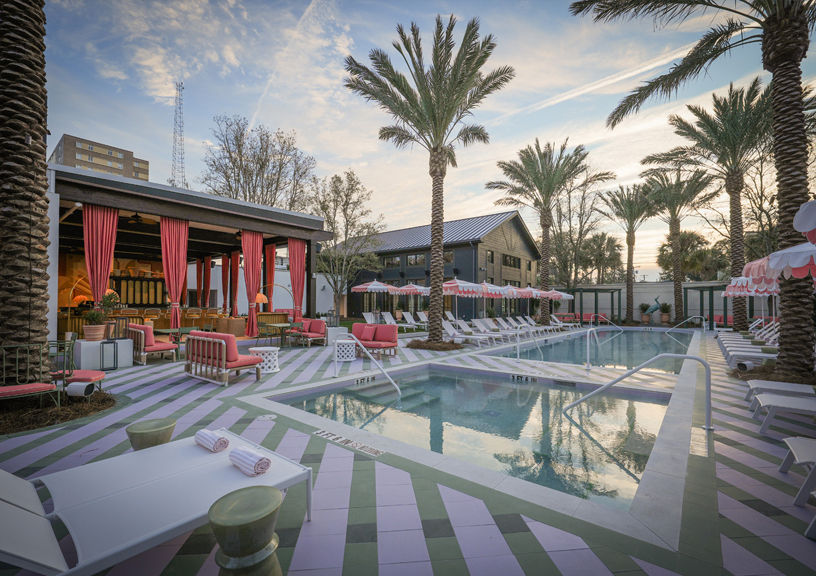
Pond’s introduction to Indian design came through his collaborations with the iconic design maestros Yabu Pushelberg on projects in Gurgaon and Bangalore. “Their projects allowed me to see both the ambitious scale and the intricate detail that can be achieved in India. There is a natural spirit of collaboration that comes with working with artisans in India, getting to know the design culture, and the interaction with architects and designers here,” Pond explains. This initial exposure laid the groundwork for his deep appreciation of Indian craftsmanship and design ethos.
During his tenure as Director at AvroKO in NYC and Bangkok, Phillip contributed to notable projects like The 1 Hotel at Central Park and The Eaton Hotel in Hong Kong, highlighting his influence on residential, restaurant, and social commons design. His experiences at AvroKO further solidified his belief in the power of narrative-driven design, where historical and cultural contexts shape the spaces, he creates.
In recent news, the design world is abuzz with the announcement of Pond’s next US hotel project, Recess. This project promises to be another milestone in his illustrious career, continuing his legacy of creating spaces that are both innovative and deeply connected to their cultural and historical contexts.
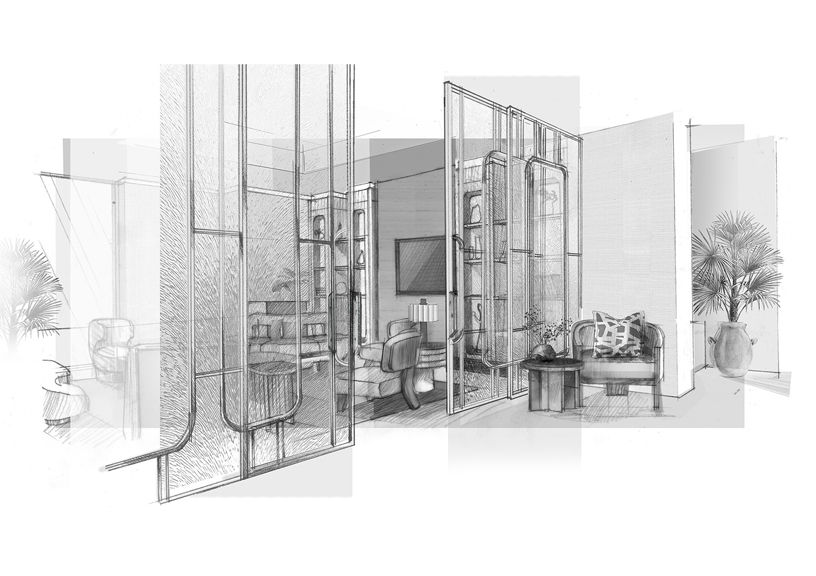
TRADITIONAL EDUCATION AND EARLY INFLUENCES
Phillip’s educational background is rooted in a traditional approach to architecture. “I experienced a wonderfully old-school style of architecture education, where I didn’t touch a computer,” he recalls. “I used a woodshop, made drawings by hand, studied history and literature. It was the mid-90s, a different era for sure.” This classical training at the University of Virginia, known as the Thomas Jefferson University, instilled in him a fundamental understanding of architecture through hands-on experience and historical knowledge.

MENTORSHIP AND CAREER BEGINNINGS
Phillip’s career trajectory took a turn early on with influences from having worked with McDonough who was the old all-architecture side of history. “I started as an architect, working on buildings and planning for William McDonough, the sustainability pioneer, and then David Rockwell,” he says. “Rockwell’s studio showed me how interiors, especially hospitality, could be so engaging and immediate, working directly with clients on design at a human scale.” This experience shifted his focus towards the intricate blend of art, luxury, and hospitality in design.
INTRODUCTION TO ASIAN MARKETS
Phillip’s relocation to Bangkok in 2015 marked a significant pivot in his career. His extensive work in Asia expanded his design horizons. “Bangkok’s geographical position made it a perfect hub for projects across Asia. I’ve been in Bangkok since 2015, and it’s been an exciting journey,” he shares. While working with AvroKO as Chief Creative
Officer, his projects in Asia included the Eaton in Hong Kong and the Four Seasons Bangkok, highlighting his ability to blend cultural nuances with innovative design.
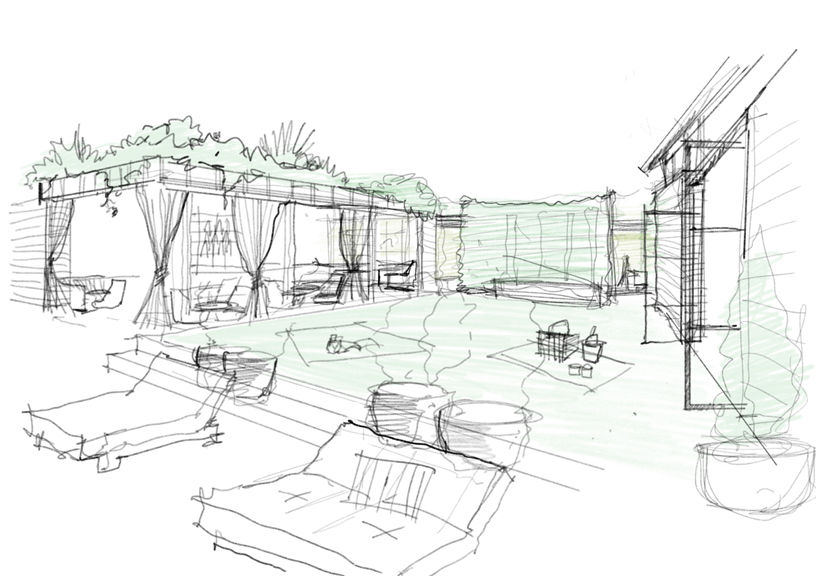
REFLECTING ON NYC
Reflecting on his New York days, he adds, “In that 1990’s era, it was a more inviting place for a young designer and felt like anything was possible, but I would have said New York looked dull in terms of the architecture then. But in the 20 years since, not anymore. It really changed. The riverside was kind of the tipping point, and now the city is full of inventive park spaces and buildings. It feels like the future,” says Phillip referring to the Hudson Yards transformation.
ESTABLISHING HIS OWN FIRM
In 2018, Phillip took the leap to start his own company. “I started my company in 2018. Fortunately, I had enough time before the pandemic to gain some momentum,” he notes. His early projects in India, such as those with Providence Land, were instrumental in establishing his firm’s reputation. Interestingly, in his interior design work, he realised that many pieces he created were essentially product designs. “If you look around this space, most of the products—lighting, tables, seating— are custom,” he says, pointing out elements of The Modernist, the exquisitely designed members’ club at the Four Seasons.
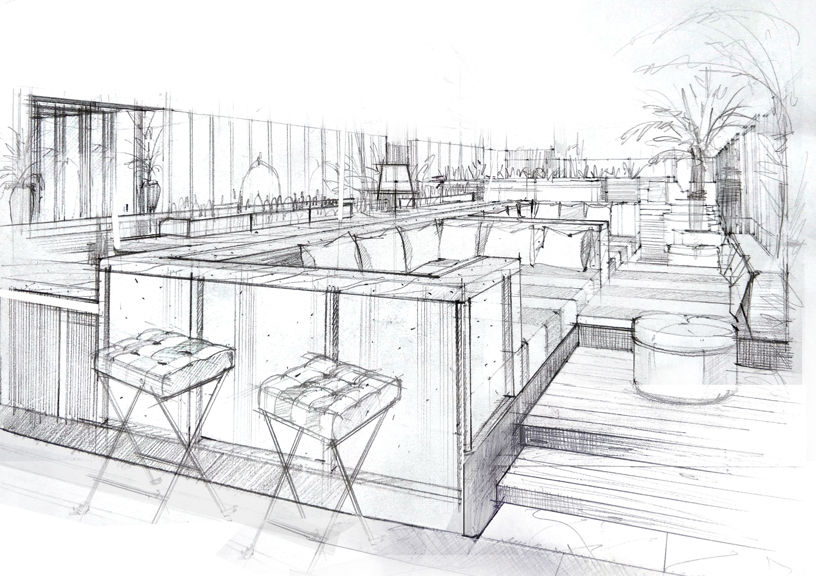
DAVID ROCKWELL: A PIONEER IN HOSPITALITY DESIGN
“David Rockwell was a complete, and still is, a total pioneer. At the time I started working for him, I was brought in by my close friend, the designer Robert Seidel. We found ourselves in this place that was just an engine of hospitality design at a very early time,” Phillip reminisces. Working at Rockwell’s firm provided Phillip with invaluable insights into integrating product design, experience design, interiors, architecture, and stage sets in a holistic way.
COLLABORATION WITH CHARLOTTE MACAUX-PERELMAN
A pivotal moment in Phillip’s career was having worked with Charlotte Macaux-Perelman (now Artistic Director of Hermes Home), and they collaborated with Daniel Pouzet, her long-time friend and fellow architect. “Charlotte has an elegant approach to building a language of design that is specific to a place, working with local craftspeople to bring together objects, patterns, and materials with a casual alchemy. For a resort project in Panama as part of her Studio CMP, we followed this approach to the architecture and interiors, adding details from the site and the artisans of the region. Working in this way, it can feel like the design emerges naturally by being immersed within a context over time,” he shares.
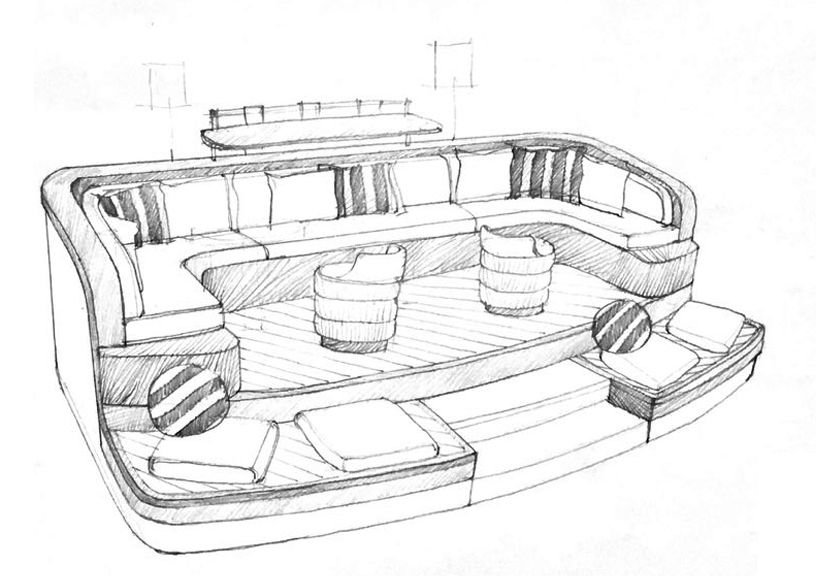
THE IMPORTANCE OF HAND DRAWING
Daniel Pouzet’s focus on hand drawing significantly influenced Phillip’s design perspective. Pouzet, a French designer renowned for his work in furniture, product design, and architecture, collaborated with top names like Philippe Starck and Jean-Marie Massaud. His designs combine innovation with functionality, creating solutions for modern living spaces. “Watching Daniel draw reminded me of a fundamental design approach I had neglected during years of commercial work. He demonstrated the power of hand drawing, capturing ideas concisely and communicating them effectively.” This skill became pivotal in Phillip’s design process. “After years of solely using computers, I hadn’t picked up a pencil. Yet here was Daniel, swiftly sketching ideas for our high-speed resort project in Panama.”
SITE ANALYSIS AND FUNCTIONAL DESIGN
Stylistically, Phillip’s team approaches large-scale concerns with the same mindset as the interiors, considering artful moments of functional details within a larger arc of narrative. “Our team thinks holistically from very large to very small scale, looking at the arrangement of neighbouring elements, whether that’s natural elements or building elements.” This approach extends to interior design, particularly in functional spaces like restaurants and bars. “Like the storyboard for a film production, we plan out the journey of a guest, looking for these moments of expression, whether using purely decorative elements or purely functional. In restaurants and bars–operationally demanding spaces–we have so many absolutes, a chair must work like one–and even these essential elements can tell the story.
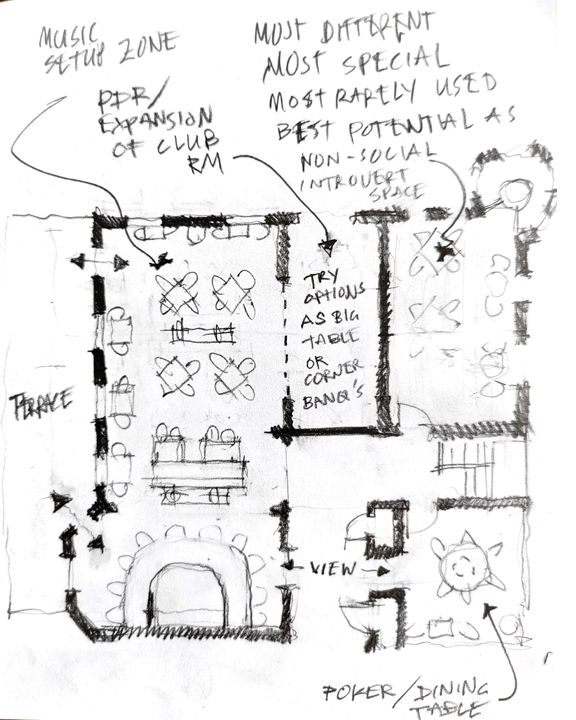
THE REDESIGN OF AER BAR
Phillip Pond’s redesign of AER Bar at the Four Seasons Hotel Mumbai is a testament to his narrative-driven approach. Reopened just last year after a year of renovations, AER now boasts a nautical theme reminiscent of a yacht club. The design includes modern interiors with nautical stripes, deck-style seating, and ocean-coloured
cushions, set against the backdrop of South Mumbai’s skyline. The bar features a retractable Wimbledon-style roof, ensuring guests can enjoy the space in all weather conditions.
Highlighting the operational changes in the evolution of AER, he points out, “In the old days, it was like an epic dance floor in the sky, and we wanted to hold on to this magical quality while also speaking to new expectations for interaction and connoisseurship.” This shift in focus has led to a more sophisticated, polished experience where bartenders and chefs share their craft, creating a deeper engagement with guests. “With its central placement and choreographed seating, guests are allowed front-row seats to the drink making and conversation. At the same
time, we kept the epic sky views in mind and created a varied landscape of seating styles to gather people together in celebration of the magic hour. That’s where one can really feel this nautical illusion, the sense of the space as a deck right on the waterfront or floating in the sea.”

SAVANNAH: THE MANSION HOTEL TRANSFORMATION
In Savannah, Georgia, Phillip’s vision for the Mansion Hotel, now the Bardo, breathed new life into the historic property. “We strategically expanded it to make an urban resort,” he describes. For the site—which was largely existing architecture—their work involved surgically fitting new program elements in and around existing structures which were mostly left alone. Elements like the courtyard conservatory, Bar Bibi pavilion, pool, lawn, and Carriage House worked to organise and extend the linear procession of spaces that begins at the front door of the hotel. “Imagine, if the everyday Savannah historic mansion has a grand arrival, a series of living rooms, and then gives way to a cozy backyard oasis, then the old hotel was just missing its backyard, and so to fix that, we introduced a series of spaces that brought both a sense of social generosity and playful classical design, the holy grail of any city hotel experience, an ‘urban resort’ derived from the traditions of its hometown,” shares Phillip.
NARRATIVE-DRIVEN DESIGN
A cornerstone of Phillip’s design philosophy is the narrative approach. “Our projects are driven by stories of historical and cultural context, and also by thinking about the people who use the spaces and the stories of their interactions,” he elaborates. This approach is evident in his projects, such as those with the Four Seasons team. “The Four Seasons team and the owners have embraced the development of these projects around narrative concepts as we develop both operational components and a poetic storytelling component with the details of the designs.”
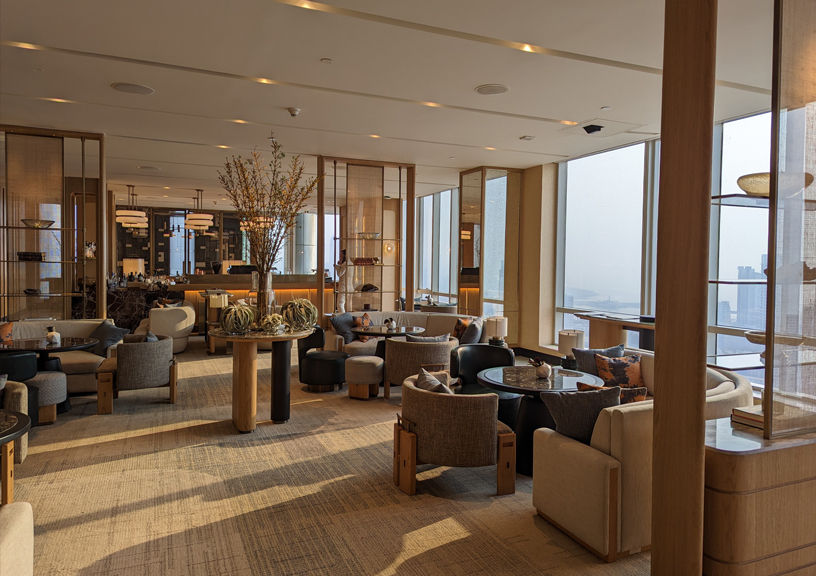
KEY TAKEAWAYS
Phillip Pond’s journey is a mosaic of experiences, influences, and collaborations, all coming together to create spaces that are not just visually stunning but also deeply meaningful. His visionary approach is transforming the landscape of hospitality design, with a focus on user experience, meticulous site analysis, and functional elegance. Phillip’s projects consistently exceed contemporary expectations for interaction, connoisseurship, and operational excellence. His work does more than just shape spaces; it inspires, bridges cultures, and resonates deeply with history, functionality, and beauty, leaving a lasting impact on the world of design.
